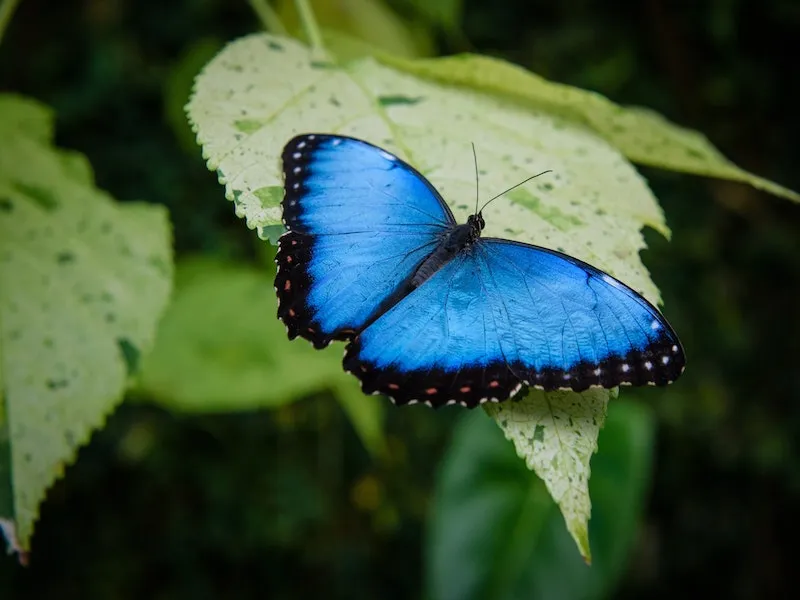Nature’s blue illusion

Did you know most of the ‘blue’ you see in nature isn’t really blue?
Most things in nature get their colour from pigments. Pigments are substances that naturally absorb light. Different pigments absorb and reflect different wavelengths of the light spectrum. The wavelengths that are reflected are the ones that we see. For example, chlorophyll (the pigment in most plants) absorbs the red (long wavelength) and the blue (short wavelength). It reflects the green wavelength though, which is the colour we see and why most plants are green.
Unlike other pigments, blue pigment is rare in nature. Scientists aren’t sure why this is the case, but they have worked out how we can still see the colour blue. In nature when you see something blue it’s usually due to something called structural colour. Structural colour is when tiny micro-structures bend and refract light as it hits them. These micro-structures have just the right angles, which allow longer light wavelengths to pass through, but the shorter blue light to bounce off, giving the species the appearance of being blue.
Different species have different microstructures: they could be chloroplasts, for example in the leaves of a rare, blue begonia plant, or keratin proteins in a bird’s wing, or a series of fibres and cells in the iris of an eye.
Different species go to the effort of producing blue for different reasons. Fairy-wrens use it to impress and attract mates. Poison frogs scare off predators. Some human eyes are blue due to a genetic mutation.
Blue eyes are actually clear eyes
The coloured part of your eye is called the iris, and it’s made up of two layers – the epithelium at the back (which contains dark coloured pigments) and the stroma at the front (made up of colourless protein and often, a pigment called melanin).
All eyes have the dark pigment layer at the back. Brown and green eyes also have melanin pigment in the front layer. Blue eyes don’t have this melanin though, which means that when light enters them, there is no pigment to absorb it. Without the melanin, the light is scattered around in this clear layer of the outer eye. The blue, shorter wavelength, light is scattered more than the other wavelengths. So blue is the eye colour we see. As blue eyes don’t have melanin, they are also more sensitive to the sun than green and brown eyes, as melanin helps to protect the eye from UV radiation.
Author:
Date Posted:
September 30, 2021
